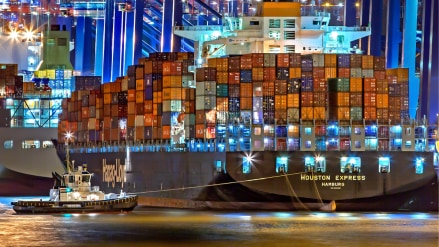By Amitendu Palit
US reciprocal tariffs are kicking in from August 7. India is one of those few countries which are yet to reach a deal with the US. Most of its exports to the US will attract 25% tariffs from August 7. Does this mean India’s export prospects to the US will be worse affected than those who have been able to “deal” with the US?
It is not possible to conclude if Indian exports to the US are better or worse off. The US’s use of tariffs as a geoeconomic power tool has led to different countries paying different prices for accepting its demands. Relatively lower reciprocal tariffs don’t mean these prices have been less.
Going by the list of country-specific reciprocal tariffs announced by the White House in its executive order of July 31, several countries have reciprocal tariffs lower than what were announced on April 2. These are countries that have worked out deals with the US. Bangladesh, for example, now has reciprocal tariffs of 20%, much lower than 37% earlier. For Indonesia too, tariffs have come from down from 32% to 19%; and for Vietnam from 46% to 20%. India’s reciprocal tariffs have marginally changed from 26% to 25%.
No uniform yardstick for “good” deals
The current debate on relative prospects for exports of various countries to the US are based on the variations in reciprocal. It is important to note that reciprocal tariffs are not the only tariffs announced by the US. There are also Section 232 sectoral tariffs that have been variously announced on steel, aluminium, automobiles, and auto parts. There are also transshipment tariffs of 40% that will be levied by the US customs on exports from any country if they are suspected to have been routed in a way that aims to avoid reciprocal tariffs for the specific country.
Reciprocal tariffs on various countries were introduced for correcting the large trade deficits that the US has with trade partners. The deficits were considered “extraordinary” threats to the national security and economy of the US, amounting to a national emergency and imposition of fresh ad valorem tariffs. While the lowest baseline tariff was 10%, many countries faced much higher rates. These included those that the US felt were maintaining significantly high tariff and non-tariff barriers for its exports and investments. The tariffs, after being announced on April 2, were paused till August 1, for allowing countries to act on trade barriers and cut trade deals with the US.
Section 232 tariffs are not country-specific, but product-specific. They also go back to Trump 1.0 and are levied on items whose imports are considered injurious to US national security. Currently, these tariffs on steel and aluminium exports to the US are as high as 50%, while those on imported cars and auto parts are at 25%. More Section 232 tariffs are likely to come into effect on imports of copper, trucks, commercial aircraft, jet engines, lumber, timber, pharmaceuticals, and processed critical minerals once investigations on “injuries” caused by these imports are determined.
Tariffs as leverage: Customised deals for each country
In its negotiations, the US has been trading off market access through country-wise reciprocal tariffs against access from Section 232 sectoral tariffs and vice-versa. These trade-offs are leading to various “prices” for different trade partners, through a combination of demand for deep domestic market access commitments; purchase commitments for US exports; and also investment commitments in the US.
Indonesia, for example, now has reciprocal tariffs of 19%. However, in its deal with the US, it has not been exempted from Section 232 tariffs. Bangladesh’s current lower reciprocal tariffs of 20% have come in return for large commitments to purchase American wheat, soya bean, cotton, and Boeing aircraft without exemptions from Section 232 tariffs.
Japan, which now has a reciprocal tariff of 15%, reduced from 24% earlier, has committed to investing $550 billion in the US. The UK, which is in the lowest reciprocal tariff category of 10%, has been spared automobile tariffs of Section 232, up to a ceiling of 100,000 vehicles annually. But auto part exports from the UK will still attract tariffs of 10%. Vietnam, while now being charged a lower reciprocal tariff of 20%, has been cramped for economic room through transshipment tariffs of 40%, which would significantly impact its prospects as a re-export hub.
The short point is that tariffs are being used by the US as a geoeconomic tool for making other countries agree to economic policies that suit its national security and economic interests. This has been made clear by the Trump administration right from the beginning through both reciprocal tariffs as well as Section 232 tariffs. And in the mix and trade-off that has followed, it is impossible to figure out which country is “better off” than others.
Moving forward, the US will continue to employ tariffs—reciprocal, Section 232, and transshipment—as geoeconomic tools for serving security objectives. If it senses that some countries are not implementing their commitments sincerely, it is likely to employ a combination of new Section 232 tariffs, along with demand for more purchase commitments, and ostensibly more non-tariff market access demands.
In the current scenario, it is not possible to figure which country has got a “better deal”. The cost of the prices that each US trade partner is paying for a deal is more, or less, depending on its specific circumstances. India, therefore, shouldn’t be too worried at this stage.
The writer is senior research fellow and research lead (trade and economics), Institute of South Asian Studies, National University of Singapore.
Disclaimer: Views expressed are personal and do not reflect the official position or policy of FinancialExpress.com. Reproducing this content without permission is prohibited.
